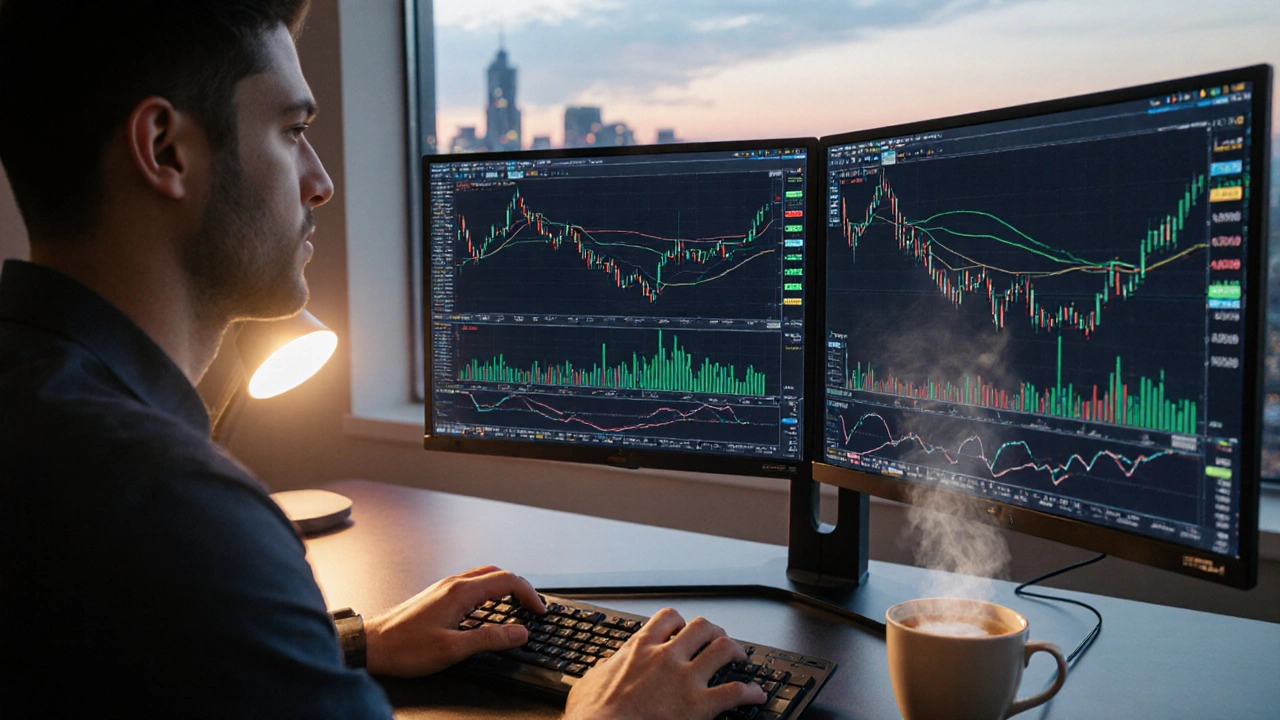Trading Psychology: Master Your Mind for Better Trades
When working with trading psychology, the study of how thoughts, emotions, and habits affect buying and selling decisions. Also known as trading mindset, it directly shapes whether a trader sticks to a plan or chases the next hype. Effective risk management, identifying, measuring, and limiting potential losses is impossible without a clear mental framework. Likewise, strong emotional control, the ability to stay calm during wins and losses keeps impulse trades at bay. Finally, recognizing cognitive bias, systematic thinking errors like overconfidence or loss aversion helps traders correct misguided choices. Understanding trading psychology is the first step toward a disciplined, profitable approach.
One core truth is that trading psychology encompasses emotional control. When fear spikes, even a solid plan falters, leading to premature exits or missed opportunities. Building routines—daily market reviews, pre‑trade checklists, and post‑trade journaling—creates consistency that blunts panic. Those habits also feed into risk management, because a trader who records every position can instantly see whether a loss exceeds the preset limit. In practice, this feedback loop makes it easier to spot when a cognitive bias, such as anchoring to an old price level, is clouding judgment.
Another key link: effective trading requires risk management. Without clear stop‑loss rules or position‑size formulas, emotions take over and the trader may double down on losing positions. By defining a maximum risk per trade—often 1‑2 % of account equity—your brain learns to treat each loss as a controlled experiment rather than a personal failure. This mindset shift reduces loss aversion, a common cognitive bias that makes many traders hold onto losers too long.
Lastly, cognitive bias influences trading psychology in subtle ways. Confirmation bias leads traders to seek news that supports their existing view, ignoring warning signs. Overcoming this requires deliberate contrarian checks: ask yourself what data would prove you wrong before entering a trade. When you pair that habit with emotional control techniques—deep breaths, short breaks—you create a mental buffer that lowers impulsive reactions. Over time, this disciplined approach builds a stronger trading discipline, the overarching habit that keeps risk management and emotional control aligned.
Below you’ll find a curated set of articles that dive deeper into each of these ideas. From practical risk‑management checklists to techniques for mastering emotions and spotting bias, the collection gives you actionable steps to tighten your trading psychology and boost long‑term results.
Insider Secrets to Becoming a Stock Trading Guru
- Lorcan Sterling
- 9 Comments
Discover the real secrets behind becoming a profitable stock trader-not through flashy indicators, but through discipline, risk management, and psychological control. Learn what actually works in today's market.
Read moreMaster the Art of Stock Trading: A Practical Guide for Real Results
- Lorcan Sterling
- 8 Comments
Learn how to trade stocks successfully with practical strategies, psychological tips, and a realistic 30-day plan. Stop guessing and start trading with discipline.
Read more10 Proven Strategies to Boost Your Stock Trading Skills
- Lorcan Sterling
- 12 Comments
Discover ten actionable strategies that sharpen technical analysis, risk management, psychology, and more, helping you trade stocks with confidence and consistency.
Read moreThe Science of Stock Trading: How to Make Informed Decisions with Data, Not Emotion
- Lorcan Sterling
- 15 Comments
Learn how to make informed stock trading decisions using data, not emotion. Discover the science behind fundamental and technical analysis, trading psychology, and proven strategies that work in real markets.
Read more




